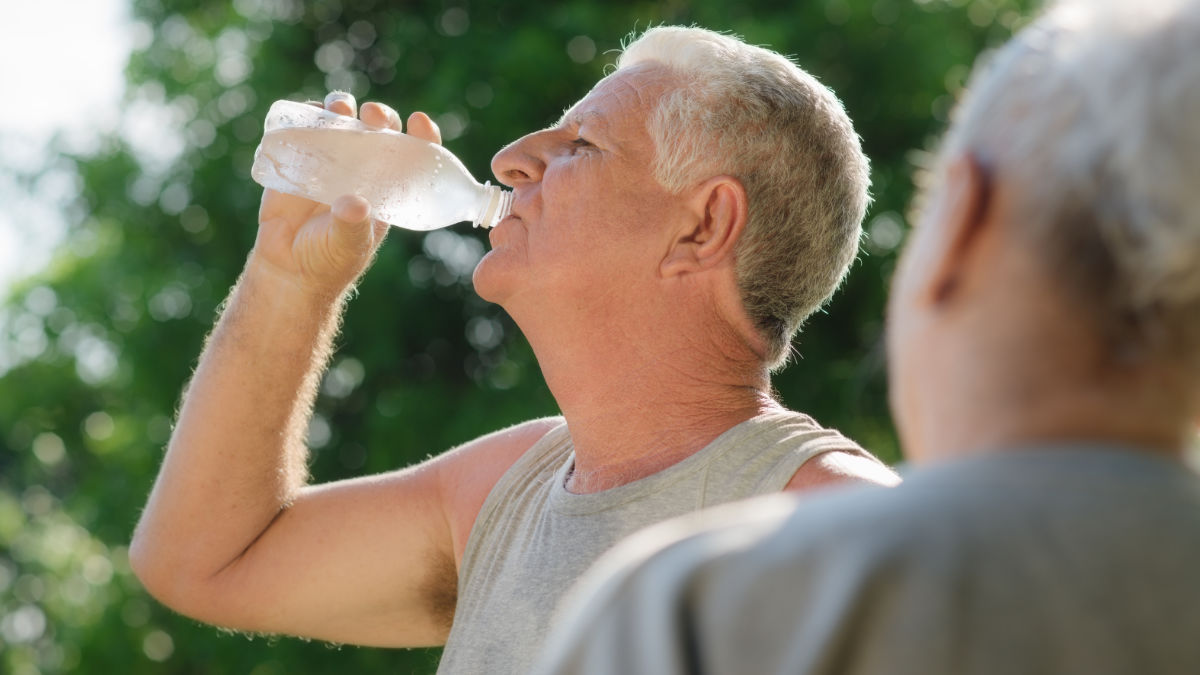Learn how to spot the signs and take immediate action to treat heat exhaustion and heatstroke.
Most of us enjoy a spell of hot, sunny weather or a holiday abroad to a hot climate. Yet the heat can put your body under severe stress. As you warm-up, your body tries to cool itself by sweating more and your heart pumps faster to redirect blood to the skin, so it can be cooled by the evaporation of your sweat. Some people’s bodies are less efficient with this natural response, leaving them at risk from heat exhaustion and heatstroke.
Heat exhaustion and heatstroke are two serious conditions that happen when your body overheats. They are commonly experienced in the summer months; when travelling abroad or exercising in high temperatures.
Heat exhaustion is a fairly common complaint, but it can develop into heatstroke if left untreated. Heatstroke is far more serious and requires immediate medical attention. Heatstroke can quickly damage your brain, internal organs and muscles, increasing the risk of serious complications or death.
Sunstroke is similar to heatstroke and is caused by being in the sun for too long.
Although heat exhaustion and heat stroke mainly affect children and people over age 60, anyone working outdoors or exercising in the high temperatures are at risk. Chronic health conditions, such as lung or heart disease, may also increase your risk of heatstroke – as can being obese and sedentary. Some medications, including beta-blockers, diuretics, vasoconstrictors and antidepressants, may also interfere with your body’s ability to regulate its core temperature.
So, whether you’re at home or abroad, it pays to know the symptoms of heat exhaustion and heatstroke along with how to treat it.
Heat exhaustion symptoms
The signs of heat exhaustion include:
- headache;
- dizziness and confusion;
- loss of appetite and feeling or being sick;
- excessive sweating and pale, clammy skin;
- cramps in the arms, legs and stomach;
- fast breathing or pulse;
- a temperature of 38C or above;
- intense thirst;
- young children may become floppy or sleepy;
Heatstroke symptoms
Heatstroke or sunstroke is far more serious than heat exhaustion. It occurs when a person’s body is unable to cool itself, so their temperature becomes dangerously high. Although it often progresses from heat exhaustion, it can strike without warning of previous heat-related stress.
Symptoms of heatstroke and sunstroke include:
- a temperature above 40 degrees C (104 degrees F);
- a throbbing headache;
- feeling very hot and dry;
- rapid, shallow breathing or shortness of breath;
- feeling confused, irritated or agitated;
- nausea or vomiting;
- fits and seizures;
- loss of consciousness or fainting;
- unresponsiveness;
Dealing with heat exhaustion and heat stroke
If you suspect someone is suffering from heatstroke act straight away to reduce their body temperature.
- Move them out of the sun and into the shade or a cool room indoors.
- Make them lie down and raise their feet slightly to get the blood flowing to the heart.
- Remove tight or extra clothing.
- Get them to drink plenty of water or a sports/rehydration drink. It’s best to take sips
- rather than guzzle.
- Cool their skin – apply wet towels or sponge with cool water. Placing ice or cold packs on the person’s armpits, groin, neck, and back will help quickly reduce body temperature.
Don’t leave them on their own until they cool down and start to feel better. However, if the person doesn’t improve within about 30 minutes, or they become unconscious or start to have seizures, call an ambulance.
Heatstroke and sunstroke are medical emergencies and can be fatal if not treated immediately. Call999 and ask for an ambulance to come urgently. While you wait for help, give first aid and place the person in the recovery position if they lose consciousness.
How to avoid heat exhaustion and heatstroke
Many people are at risk of developing heat exhaustion and heatstroke during hot weather or when exercising intensely. Fortunately, there are steps you can take to minimize your chance of getting heat exhaustion or heatstroke.
- Drink plenty of water and cold drinks, especially when exercising in hot weather. This is the most important preventive measure you can take. On a normal day, you should drink around two litres of water – about eight decent-sized glasses – but in hot weather, you need more.
- Take cool baths or showers.
- Spray your skin with water or use a damp flannel on the back of your neck and wrists. As the water evaporates from your skin, it will cool you down.
- Wear light-coloured, loose clothing made from natural fibres such as cotton or linen which allow your body to evaporate heat readily by sweating.
- Avoid the sun between 11am and 3pm
- Avoid alcohol as it causes dehydration
- Avoid strenuous exercise
- Take time to acclimatise. If travelling somewhere hot and humid, give yourself a day or two to adjust to the higher temperatures before tackling a busy holiday schedule.
Pets can suffer heatstroke too
Pets, in particular dogs, are also susceptible to developing heatstroke in hot conditions – which if left untreated, can kill. Warning signs include heavy panting, excessive drooling, bright red tongue, drowsiness, collapsing, seizures or being sick.
If you think your pet is suffering from heatstroke, move them to a cool shady area, douse them in cool water or use a wet towel to cover them, and call a vet immediately.
Reduce the risk of your pets getting heat stroke by ensuring you have a cool, well-ventilated space for them to use or plenty of shade if kept outdoors. Make sure they have access to plenty of fresh drinking water and avoid exercising animals in hot weather or walking them on hot pavements and concrete. And finally, never leave your pet in a parked car – even with the window rolled partially down. Internal car temperatures can rise extremely quickly and can kill pets rapidly.
































































